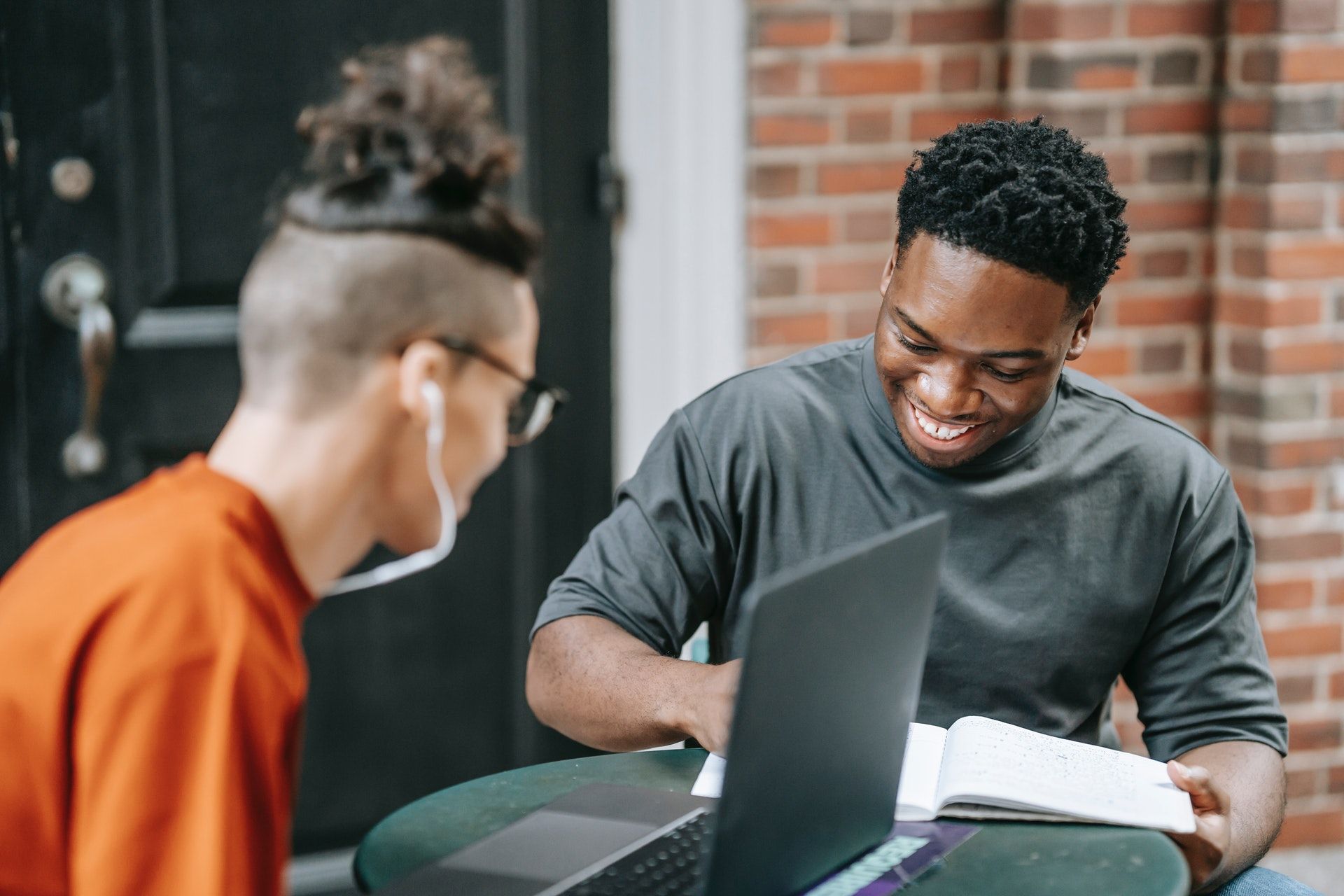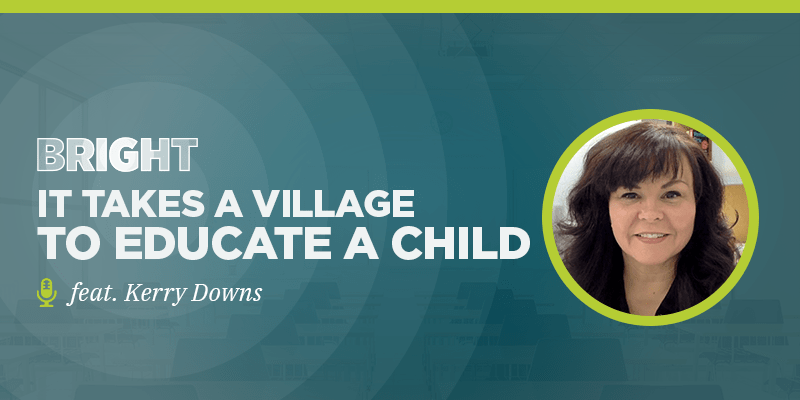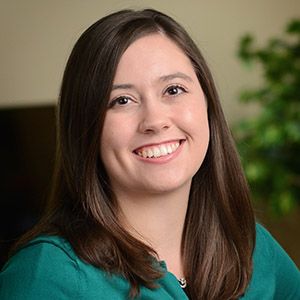Kerry Downs was a teacher for 18 years in Flint before she left for what she describes as the only role that would have taken her out of the classroom.
Before this new opportunity arose, she was certain that she’d be a teacher forever, the kind that had to be tapped on the shoulder and asked to retire.
But her new position has brought with it opportunities she never would have thought possible.
It all started when folks from the Crim Fitness Foundation showed up at her school looking to form a partnership.
At first, Downs was skeptical. She nodded politely, sure, but she didn’t expect much. As a seasoned teacher, she was accustomed to receiving binders of information on flashy, new pedagogies that would soon enough be collecting dust on a shelf.
“After teaching 18 years,” she says, “I had a shelf full of binders that were never going to provide a perfect answer. What my kids needed wasn’t in a specific curriculum or a go-to strategy.”

“After teaching 18 years, I had a shelf full of binders that were never going to provide a perfect answer. What my kids needed wasn’t in a specific curriculum or a go-to strategy.”
But then these partners from the Crim kept showing up and built relationships with her students and their families. Eventually, Downs got curious to learn more about what this whole program was about.
Flash forward to today, and she’s now leading the Flint Community Education Initiative (Flint CEI) as its executive director.
The work of this innovative organization has transformed her vision for education and solidified her belief that “every school should be a community school.”
Community education & the concept of the “lighted schoolhouse”
Community education has deep roots in the city of Flint.
In the 1930s, C.S. Mott and Frank Manley originated the concept of a “lighted schoolhouse” where the local schools were envisioned to serve as vibrant centers of community life.
This model lived on in the city for some time, but eventually, the programs that were in place disbanded during educational shifts in the ’80s and ’90s.
“When the city started working on their master plan for the city of Flint in 2012,” Downs says, “they held these forums where they asked the community what they needed, and kind of unanimously, the community said it wanted community education back.”
Today, the Flint CEI has brought this “lighted schoolhouse” model to 13 schools in Flint. At their elementary schools, community school directors stay after-hours until 7 p.m., and at high schools, they stay even later until 8 or 9 p.m.
“There’s always someone at the building,” she says, “which really gives us an opportunity to have those school buildings be the hub of the neighborhood. We have a lot of partners stepping up to provide support under the guidance of the community school director with direct alignment with the school’s vision alongside the principal and building staff.”
What kinds of support does the Flint CEI offer to families in their community?
Downs explains that they have four main goals:
- Increasing literacy rates
- Improving attendance
- Improving graduation rates
- Having a positive neighborhood impact
To accomplish these goals, they have six main components to their work:
- Expanded learning for kids
- Health services
- Adult education
- Early education programs
- Family engagement activities
- Community & economic engagement
In many ways, this model goes beyond efforts to address the “whole child” in education to address the “whole family” and the “whole community.”
“We know that when we support the whole family,” Downs explains, “the whole family thrives and kids do better. When the neighborhood is strong, we know that schools are even better supported.”

“We know that when we support the whole family, the whole family thrives and kids do better.”
A cornerstone of their organization is listening.
“Our community directors never walk into a school assuming that they know what the needs are,” she says. “They do a needs assessment and listen to find out: What are teachers and staff members noticing? What are parents listing as their needs? What are kids saying they want?”
By listening first, they are able to step in to fill in gaps and address their community’s most pressing needs.
Taking responsibility off the shoulders of teachers
Back when Downs was still in the classroom, she recalls feeling most frustrated by the things she couldn’t provide her students.
“At night,” she reflects, “I’d find myself driving home thinking, ‘Gosh, I got to all the curriculum, and I was so intentional about making sure the kids got all the academic support they needed. But I don’t think Jalen was wearing his glasses today.’ Or ‘Ashley wasn’t in class again today, and I didn’t call mom to find out why she wasn’t there.’ Time and time again, I found myself not being able to meet all of their needs. But if you have a class of 30 kids as a teacher, you just are never going to have enough time and energy to meet all of their needs. It was very clear to me.”
Part of what she appreciates most about this model is the responsibility it takes off the shoulders of teachers.
“For so many years,” she says, “we have asked teachers to be the answer to everything and to wear 10 different hats. We ask them to be a teacher and a counselor but also a family engagement specialist. What happens is it really takes a toll on our teachers. They should get to focus on being this lead educator and focus on making sure kids do great learning.”

“For so many years, we have asked teachers to be the answer to everything.”
Take, for example, the case of the student missing their glasses.
“Now we have community health workers a phone call away or an email message away,” she says. “The teacher can say, ‘Can you check on Jalen in my class and find out if mom needs help with glasses?’ It might be they need eyeglass repair. Maybe he lost them or they need an appointment. The community health worker can help with this and does all the follow up to make it happen. It’s a great opportunity to expand the network for our teachers and make sure that kids are supported.”
Teaching kids to see the greatness within themselves
The beauty of this model of community education shines most brightly when you look at stories of individual students and families whose lives have been changed for the better.
I asked Downs to share a couple of examples of stories that motivate her to do her best work every day.
One story, in particular, came to mind.
“We had a student who was struggling,” she says. “School just wasn’t a priority for him, and he didn’t have a lot of role models in his life. Mohammed Aboutawila, the community director at his school, stepped in to serve as a role model for him. Not only was he making sure that that student was getting what he needed, but he also created opportunities for that student to be a leader in school. He’s graduated now, and he attributes a lot of the success that he saw at school and his desire to give back to the community to Mohammed. Because Mohammed saw greatness in him when he didn’t see himself. And now he feels like he stepped into that greatness.”

“Mohammed saw greatness in him when he didn’t see himself. And now he feels like he stepped into that greatness.”
It’s hard to listen to Downs tell the story without tearing up.
“When you have a first-grader who says the best part of their day is when they eat lunch with a success mentor,” Downs says, “oh my goodness, that for me is the reason why we show up. It’s why we get up every morning. It’s our why.”
Like usual, at the end of our conversation, I asked Downs about her favorite teacher.
Her answer told a powerful story that serves as a testament to the unparalleled ability of education to transform a student’s life.
“I was one of those kids who someone might have predicted would not be successful,” she shares. “I had a really rough childhood. We lived in some serious poverty, and there was a lot of trauma in my childhood. But I can pick out teachers every year who made a difference. I don’t think they had any idea what a difference they made in my life. That school was probably the most stable thing I had going in my life. But it really did inspire me to be a teacher and to be a person who shows up.”
Surprising results: Community education goes virtual
Like the rest of the world, during COVID-19, the Flint Community Education Initiative switched over to a virtual format for many of its programs.
When they began this transition, Downs wasn’t sure how effective it would be, but the results were surprising.
In many cases, they found MORE families were engaged than ever before because the barrier of transportation was removed and anonymity became an option.
For example, with family Zumba classes, they found greater participation with virtual options than they ever had with face-to-face classes.
“I never in a million years thought this was going to work,” she admits. “But we found that some of our parents are better engaged in a virtual format.”
Similarly, they’ve found new ways to provide online opportunities for students.
“I hope that the online opportunities we’ve provided for students never go away,” Downs says. “We figured out how to do a robotics team virtually. We figured out how to do nutrition lessons with families, where a nutritionist leads a lesson online and groceries are delivered to their doorstep. We’ve offered virtual college tours to students at places we wouldn’t even have thought to travel to in-person because of the distance or just a lack of opportunity. It removes the barrier of transportation, and we’re opening doors for some families that maybe wouldn’t have that opportunity. We have to be windows to the world, right? That’s where online learning has been very powerful.”

“We have to be windows to the world for our students, right? That’s where online learning has been very powerful.”
While some students have struggled to stay engaged with online learning from home, she says, others have really thrived in this model, particularly at the middle and high school level.
“My hope,” she says, “is that we don’t let go of all that we’ve learned in the last year.”
It takes a village to educate a child
After my conversation with Downs, I was left in awe of the way the Flint Community Education Initiative had devised such an effective and innovative way to leverage local partnerships to support their community.
It seemed clear to me that every school, every community, and every family could benefit from having a model like this in place.
The burden of educating the “whole child” shouldn’t be placed solely upon the already weary shoulders of our teachers. The rest of us — together, as a community — might need to step up to help fill some of the other gaps.
It truly does take a village to educate a child.
When healthcare needs are addressed, when social emotional learning is provided, when students are safe and fed and cared for, academics also improve.
The work of the Flint Community Education Initiative validates this through its stories of student success and provides an effective model for other school districts to consider as they work toward partnering with local community organizations to support families.
I asked Downs if she has any advice for educators looking to replicate a model for community education like this at home.
“I would get together with other teachers and identify your key priorities,” she says, “and then reach out to any of your local organizations. I would keep it very attainable. I would not overwhelm myself. If your first goal is to make sure that our kids are connected to a primary care physician and that they have some type of insurance program, then I’d reach out to local health care organizations and let them know this is your interest and ask what they could put together for you.”
In her experience, she has found that more often than not, local organizations and nonprofits are eager to invest in the schools in their communities.
“Partners are ready to invest in our kids,” Downs says. “That’s our mindset. Everyone has an obligation to invest in our kids.”

“Partners are ready to invest in our kids. Everyone has an obligation to invest in our kids.”

